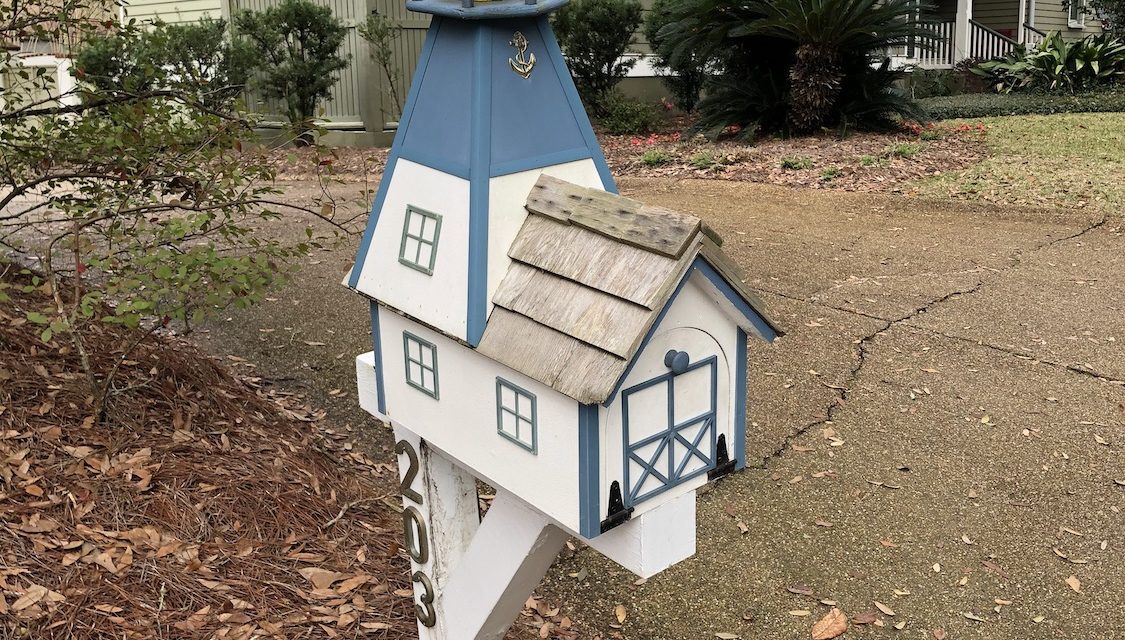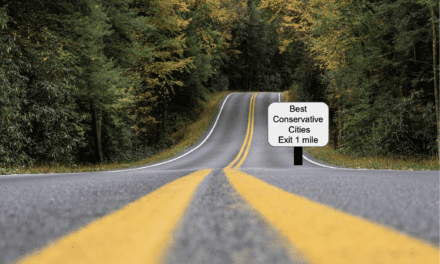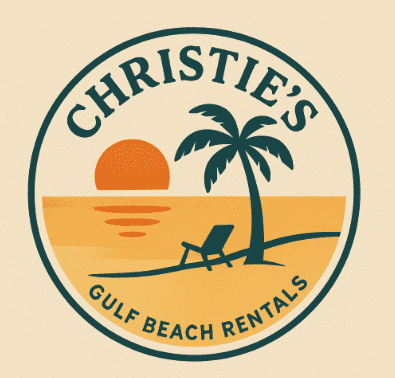Last updated on June 29th, 2025 at 08:42 pm
For the past few years, since I moved to the Mississippi Gulf Coast, unique mailboxes have caught my eye. Every time I see one, I take a photo. It’s about time to show you some of the attractive and unique mailboxes that I have seen along the Mississippi Gulf Coast. Curb appeal is a term used by many to describe how a house looks from the street. Few things can make your house stand out more than a decorative mailbox.
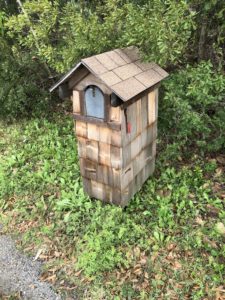
Most of the mailboxes that I have seen were in Ocean Springs, a small town where my wife and I love to walk around. The neighborhoods are interesting. Unlike the suburban developments that many of us live in, the homes in Ocean Springs are all custom homes built over the past 150 years. Many people have unique mailboxes that make their homes stand out.
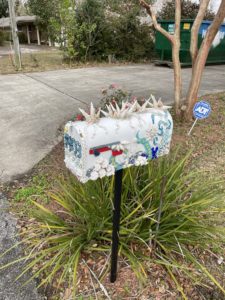
People in Ocean Springs (and elsewhere along the Gulf Coast) seem to have a thing for a unique mailbox. If you think about it, you see the mailbox before you see the house. You would think it’s something like keeping up with the Joneses, but it’s not. Not every home has a unique mailbox. Most were purchased from a hardware store.
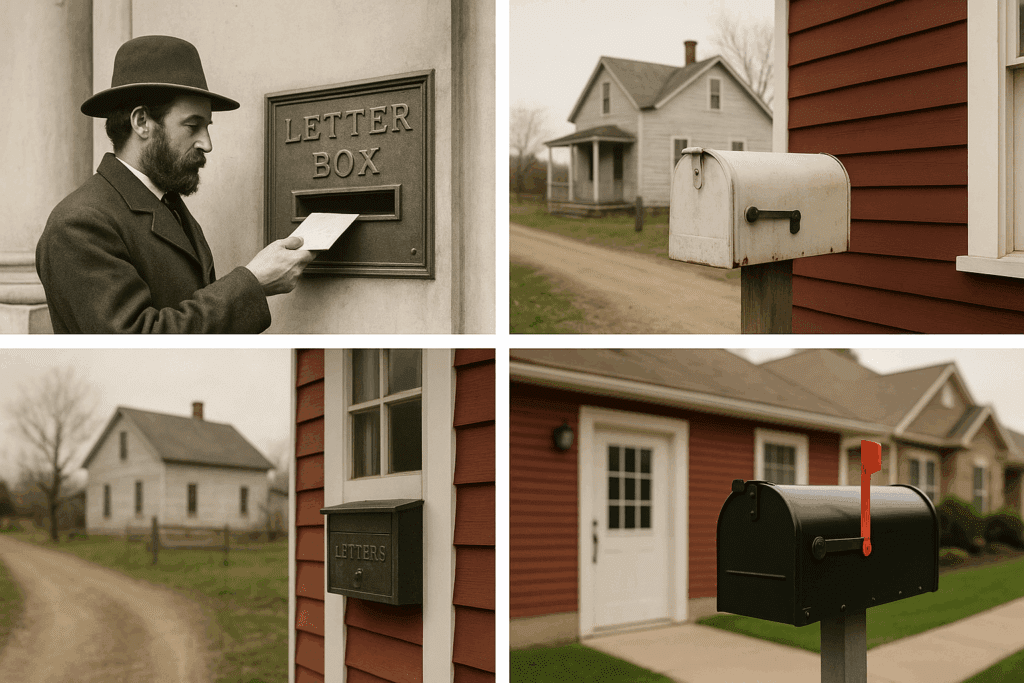
History of Mailboxes
🏛️ Early Mail Delivery (Pre-1863)
- Before 1863, mail was not delivered to individual homes. Residents had to travel to the nearest post office to pick up their mail.
- Mail was considered a privilege for those who could afford it, and many rural areas were not served at all.
🚶 Home Delivery Begins (1863)
- In 1863, free home delivery began in large U.S. cities as part of the Civil War-era reforms.
- Mail carriers started delivering letters directly to homes only in urban areas, but there was still no requirement for a mailbox — if the recipient wasn’t home, the mail wasn’t delivered.
📬 Mailbox Requirements Emerge (Late 1800s–1900s)
- As home delivery expanded, especially with Rural Free Delivery (RFD) starting in 1896, the need for a consistent method of leaving mail became obvious.
- The U.S. Post Office Department (now USPS) encouraged and then required rural residents to install mailboxes or mail receptacles.
- In 1923, a federal regulation mandated that all homes receiving mail must have a mailbox or letter slot.
🔧 Standardized Mailbox Design (1915–1940s)
- The Post Office began promoting a standard design for rural mailboxes in 1915, created by Postmaster General Albert S. Burleson.
- The iconic curved-top metal mailbox on a post, with a red flag, became popular and was later standardized.
- Flag use: The red flag on the side of the mailbox indicated outgoing mail for the carrier to pick up.
🏙️ Curbside vs. Door Delivery
- Urban homes typically used door slots or wall-mounted boxes, while rural and suburban homes had curbside mailboxes.
- In the mid-20th century, suburban development led to the widespread adoption of curbside mailboxes even in non-rural areas.
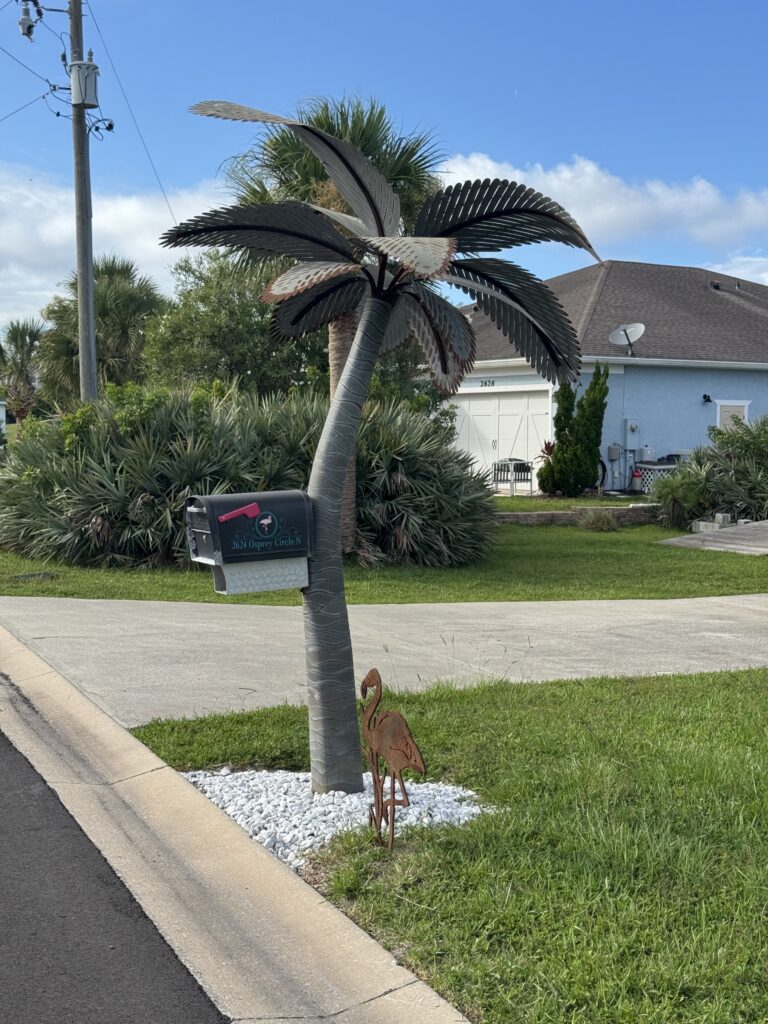
🎨 Mailboxes as Decorative Features (Mid-20th Century to Today)
By the mid-20th century, especially during the post-WWII suburban boom, homeowners began to view the mailbox not just as a utility but as a decorative extension of their home’s personality. As curb appeal became more important, mailboxes started featuring ornate posts, unique shapes, custom paint, and even themes—ranging from miniature barns and animals to replicas of the home itself.
In the 1970s and 1980s, it became increasingly common to see handcrafted or novelty mailboxes in rural and suburban neighborhoods, often reflecting hobbies or professions. This shift was partly driven by DIY culture, increased homeownership pride, and relaxed USPS guidelines allowing for more personalization—so long as boxes remained functional and accessible to carriers.
Today, decorative mailboxes are commonplace and can even be purchased in themed sets or custom-built, blending aesthetics with utility while still adhering to USPS standards.
🔐 Locked Mailboxes and Security (Late 20th Century–Today)
- With rising concerns about mail theft, especially with identity theft and e-commerce, locked mailboxes and cluster box units (CBUs) became more common.
- USPS started requiring centralized mail delivery in many new housing developments and apartment complexes.
🧰 Modern Mailbox Standards
- The USPS currently maintains detailed specifications for mailbox construction and placement (e.g., height, distance from curb, labeling).
- Cluster mailboxes and parcel lockers have increased due to online shopping and package delivery needs.
🧾 Summary Timeline:
| Year | Event |
|---|---|
| Pre-1863 | No home delivery; residents pick up at post office |
| 1863 | Home delivery begins in cities |
| 1896 | Rural Free Delivery begins |
| 1915 | Standard rural mailbox design introduced |
| 1923 | Mailbox or mail slot required for delivery |
| 1940s–Present | Widespread use of curbside boxes; security features grow |
| 1950s–Today | Decorative and custom mailboxes gain popularity |
| 2000s–Present | Cluster boxes and package delivery boxes adopted |
Mailboxes as Art: Why I Believe They’re Making a Comeback
Mailboxes have always struck me as more than just functional—they’re a form of art. There’s a neighbor of mine, just a couple of houses down from one of my properties, who proves this point beautifully.
He didn’t stop at designing a mailbox for himself; he created handcrafted mailboxes for several other neighbors as well. Each one is different, and you can instantly tell they were made by hand—not churned out in a factory overseas.
More Than a Mailbox—A Creative Expression
One of the more common artistic designs I see around here is the brick pedestal mailbox. These are often built in newer neighborhoods where homes have brick exteriors. Homeowners use leftover bricks to construct sturdy, attractive mailboxes—sometimes with planters built into the side.
These are practical and elegant, but I’m personally drawn to the more whimsical creations. I’ve seen mailboxes made of wood, wrought iron, even sculpted metal. They aren’t just containers for mail—they’re statements.
For example, on Etsy you’ll find hundreds of unique, handmade mailboxes—everything from coastal themes to mid-century modern designs. Many of these could easily double as art installations. Likewise, The MailboxWorks offers a curated selection of high-end decorative and luxury mailboxes for those looking to blend style with substance.
These designs inspire me, and I believe more people would consider a custom mailbox if they knew how accessible and affordable these creative options are.
Not Everyone Gets the Joy of a Personal Mailbox
Of course, many people reading this probably don’t have the option to express themselves through their mailbox—because they don’t have one at their home. Instead, they get their mail from a large, multi-unit steel mailbox that serves 20 or more homes. That’s the direction the U.S. Postal Service has been going in recent years for new developments, especially in cities and suburban complexes.
Fortunately, I live in a neighborhood where we still get mail delivered directly to street-side boxes. And here in Ocean Springs—like in much of the Mississippi Gulf Coast—that kind of personal delivery is still common. Some even enjoy the rare treat of doorstep mail delivery, something nearly unheard of in much of metro America today.
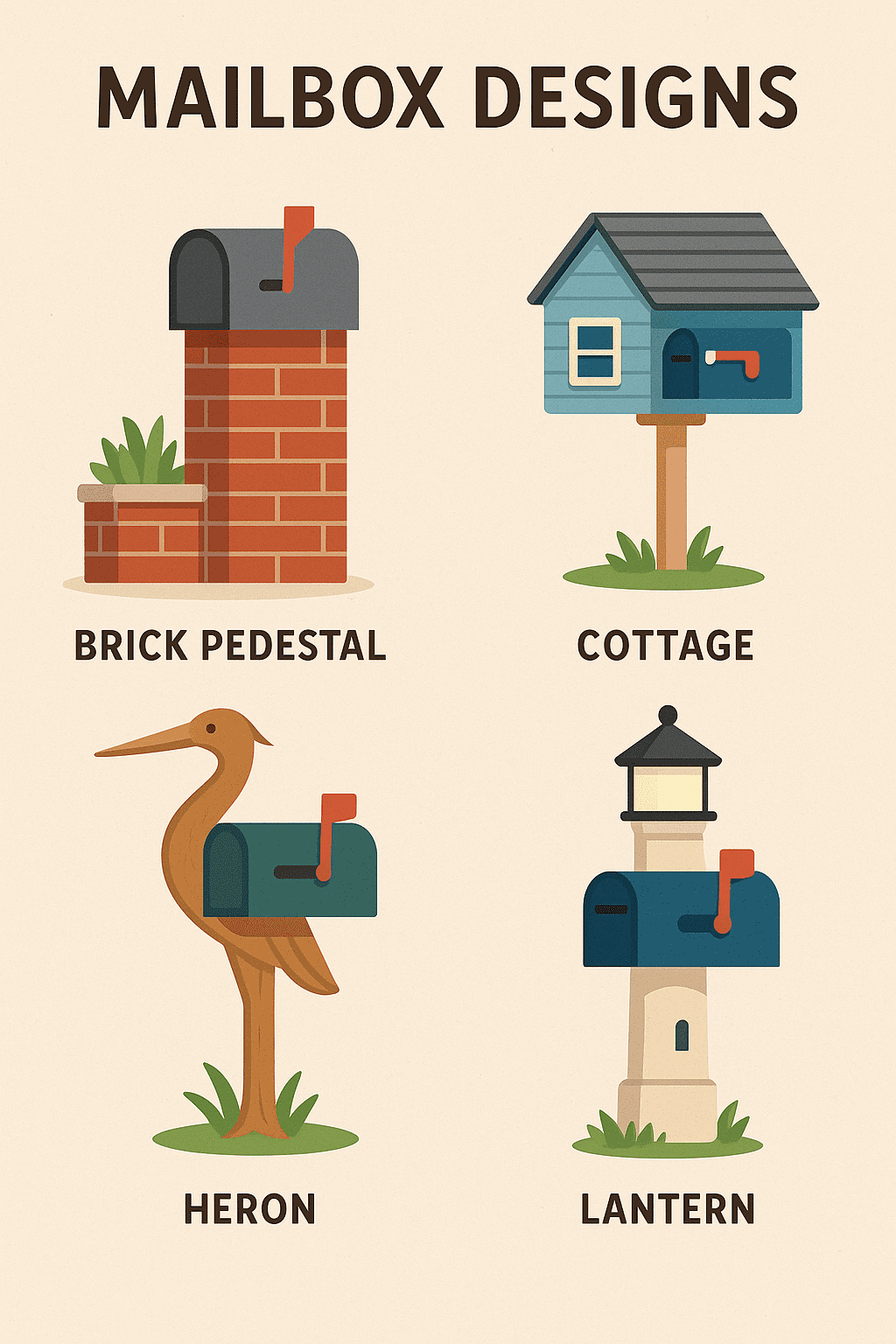
Remember When Delivery Meant Something Personal?
I’ve lived in communities with centralized mail systems. Trust me—when you get a package that doesn’t fit in the box, the carrier leaves a slip inside instructing you to visit the post office. That’s not exactly convenient, especially if it happens often.
Contrast that with life here on the Gulf Coast. When my mailbox is too small for a delivery, the carrier simply brings it to my porch. That kind of care is what I appreciate—and it makes having a beautiful, personalized mailbox feel even more special.
Sure, a few new developments here have adopted the multi-box system, but most neighborhoods still value the tradition of individual curbside mailboxes—some of which are absolutely stunning.
Bring Back the Art
Maybe we’re all overlooking an opportunity to bring beauty back to the curb. Whether it’s a hand-welded design, a mailbox built from reclaimed wood, or a modern artistic piece purchased online, these little structures offer an easy way to add personality to your home. In a world where uniformity is spreading, I say let’s stand out—one mailbox at a time.
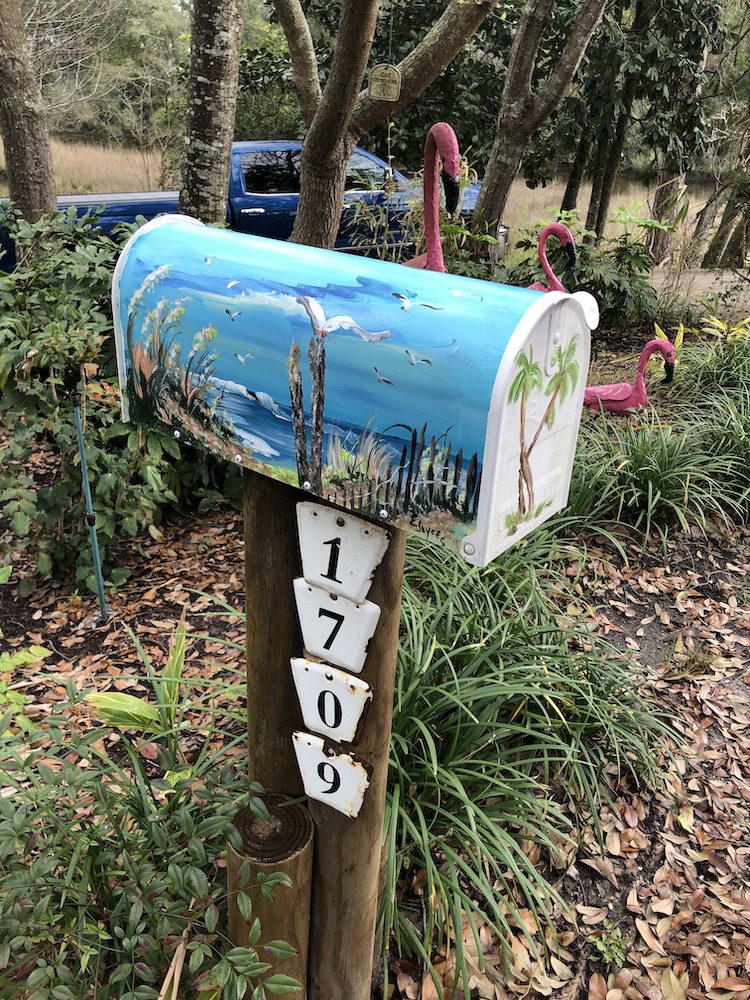
Where Do You Find a Unique Mailbox?
It all starts with your creativity. If you’ve got a few tools and a good idea, you can build a one-of-a-kind mailbox that reflects your personality and your home’s character. Don’t know where to start? Take a drive around your area—there’s plenty of inspiration out there. I’ve spotted everything from lighthouse mailboxes to miniature shrimp boats right here on the Mississippi Gulf Coast.
Around here, nautical themes are popular. But depending on where you live—whether it’s the desert, the mountains, or farmland—you can create something that fits the local flavor. In the Southwest, I’ve seen adobe-style boxes. In ranch country, it’s not unusual to see one shaped like a horse or perched on a post made from a weathered fence rail.
Matching your design to your environment
Matching your mailbox design to your environment is one of the most common (and effective) approaches, but don’t be afraid to think outside the box. Want something fun and offbeat? Go whimsical. Prefer sleek and modern? That works too.
If you’re the hands-on type and want to build one from scratch, there are some great step-by-step resources online:
- 🔨 Instructables – A massive library of creative DIY mailbox projects with detailed instructions and photos.
- 🪚 Family Handyman – Practical, USPS-compliant mailbox post and box plans designed to withstand the elements.
- 🛠️ Ana White – Stylish, beginner-friendly woodworking projects, including artistic mailbox designs and unique posts.
Want to make yours more functional? If you live in a low-crime area, consider adding a small package compartment to your design. It’s an increasingly useful feature as more of us receive daily deliveries. Some folks even add newspaper slots for that nostalgic touch.
Don’t want to start entirely from scratch? No problem. You can find unique mailbox posts and bases that let you focus on decorating or modifying the box itself. One of the most artistic examples I’ve seen was mounted on a handcrafted replica of an oil rig platform. It was creative, personal, and definitely a conversation starter.
I’ll be adding more photos of artistic mailboxes to this post as I find them. If you’ve created something special—or spotted a mailbox that made you do a double-take—[send it in]! I’d love to feature mailbox art from across the country.
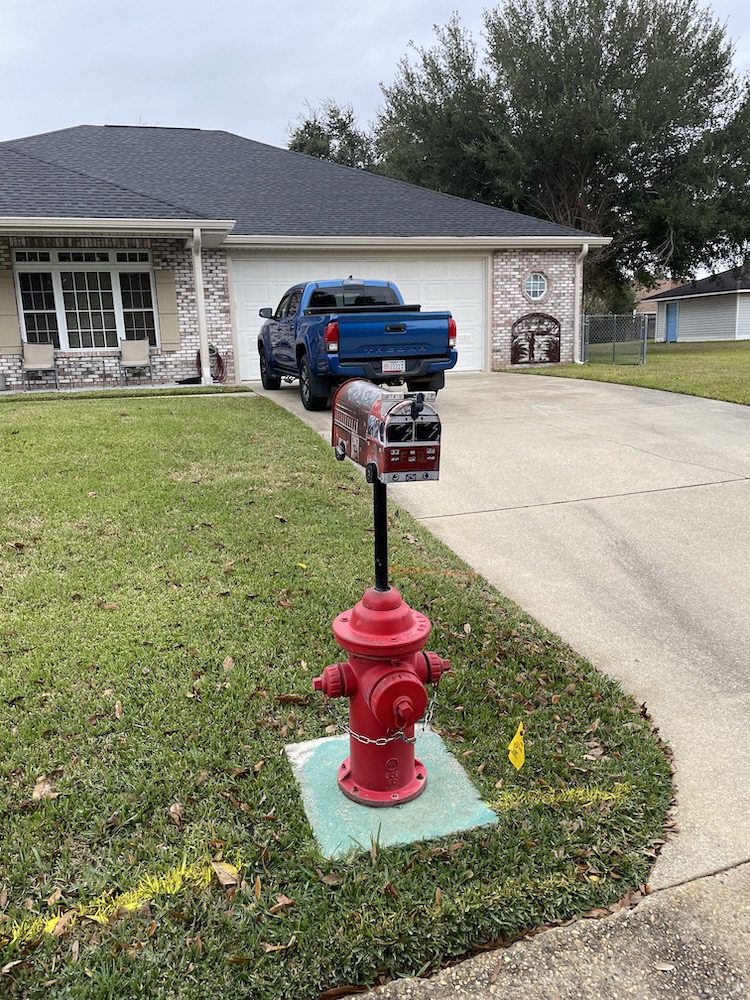
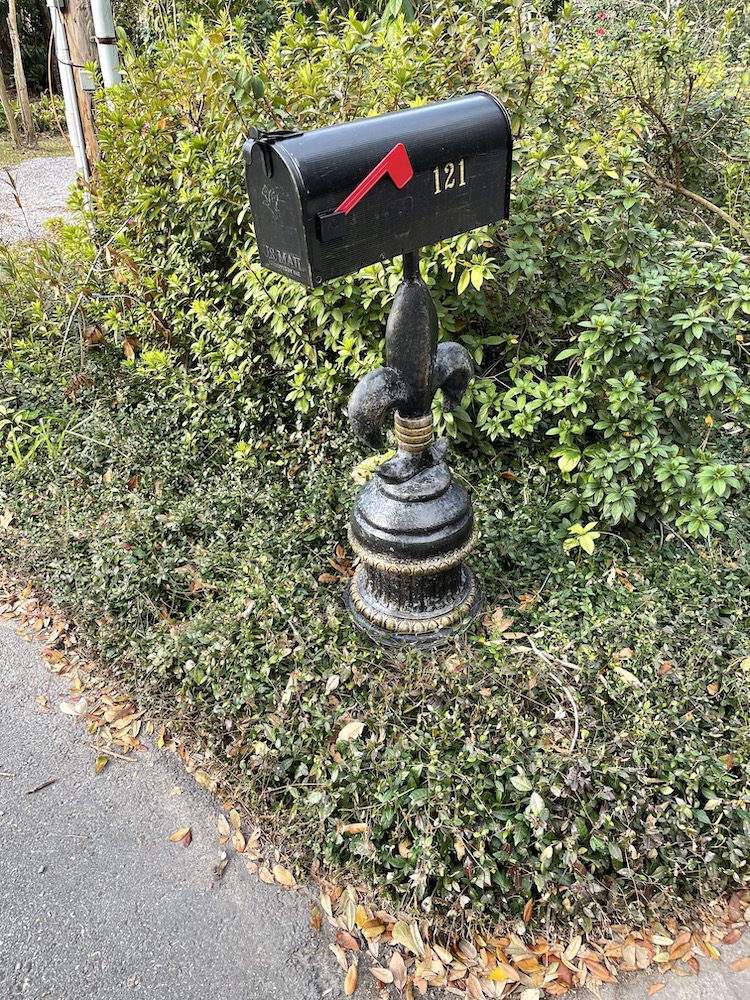

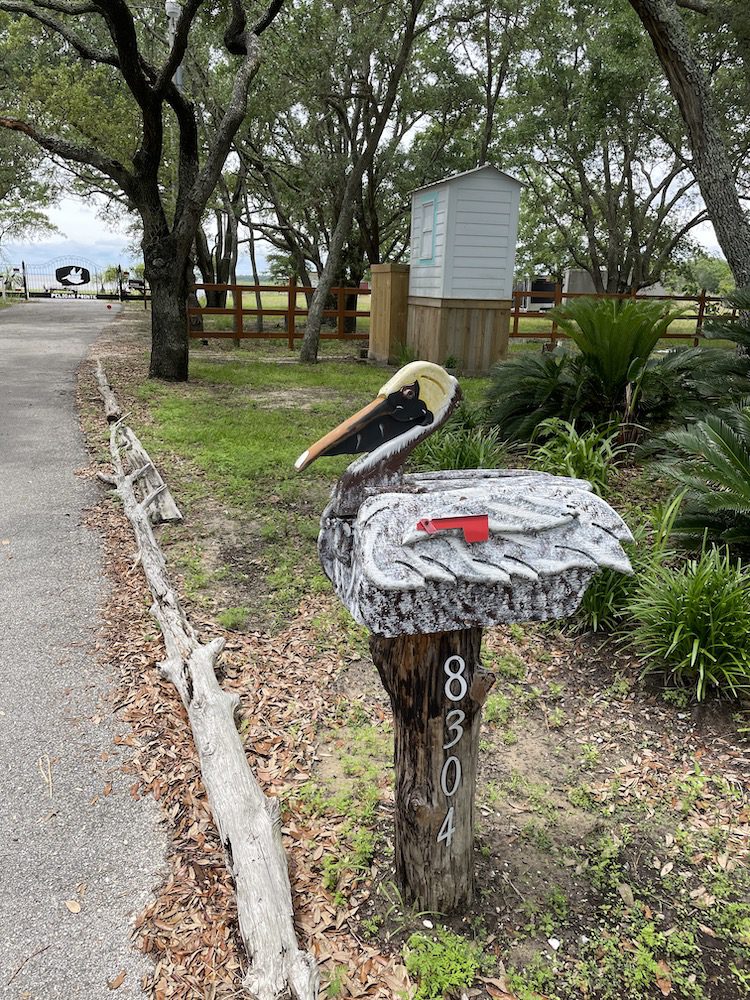
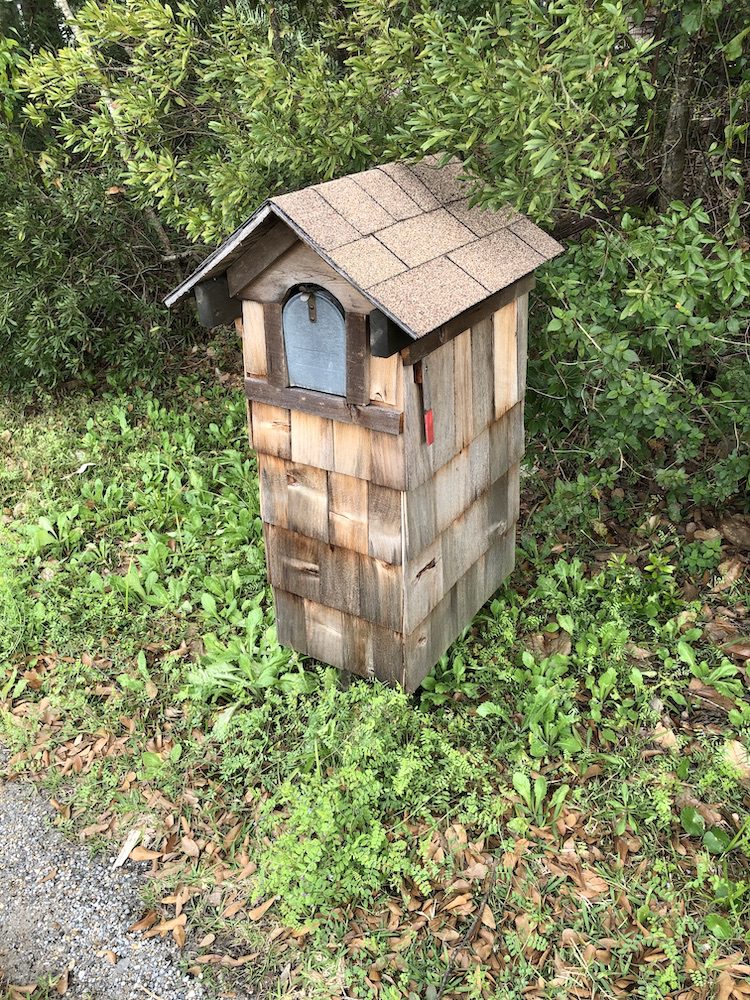

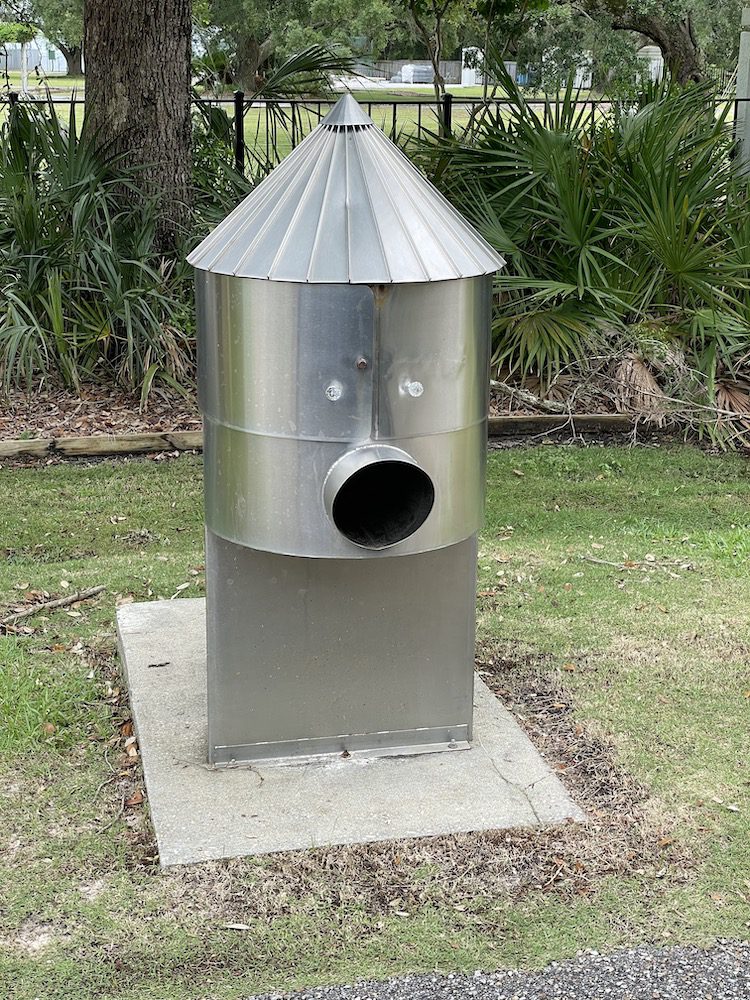
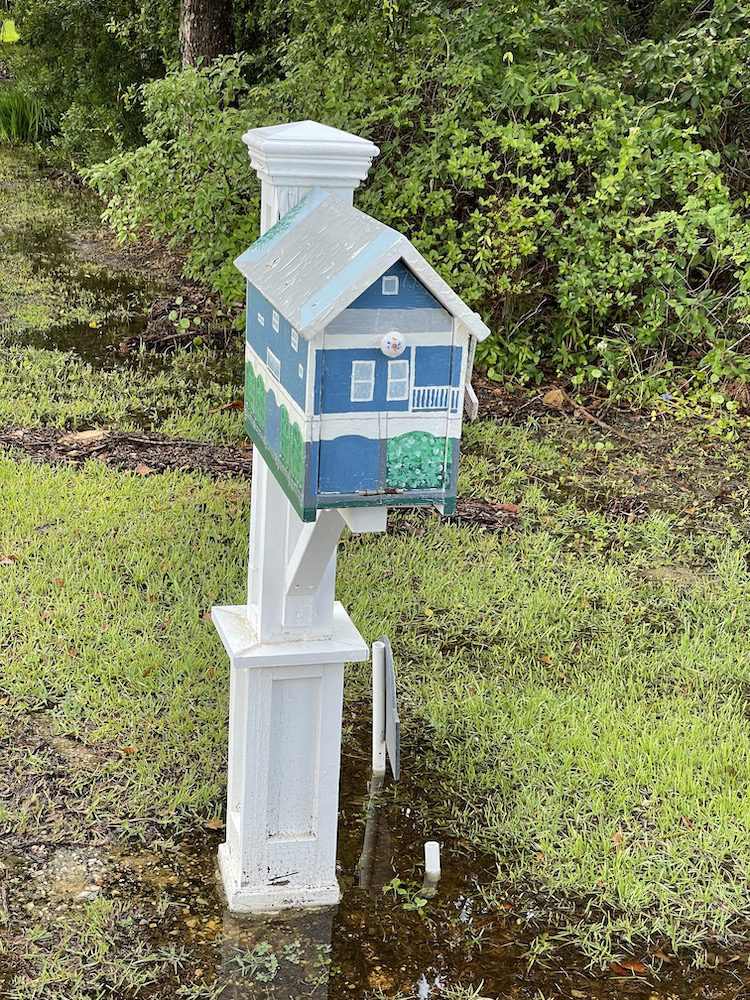

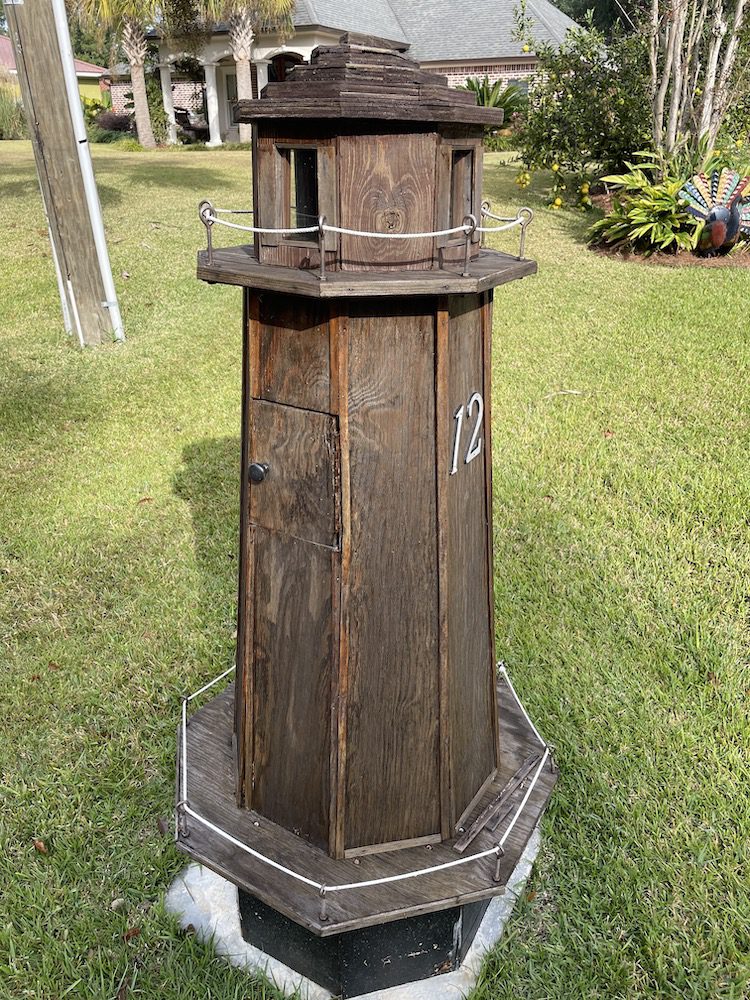
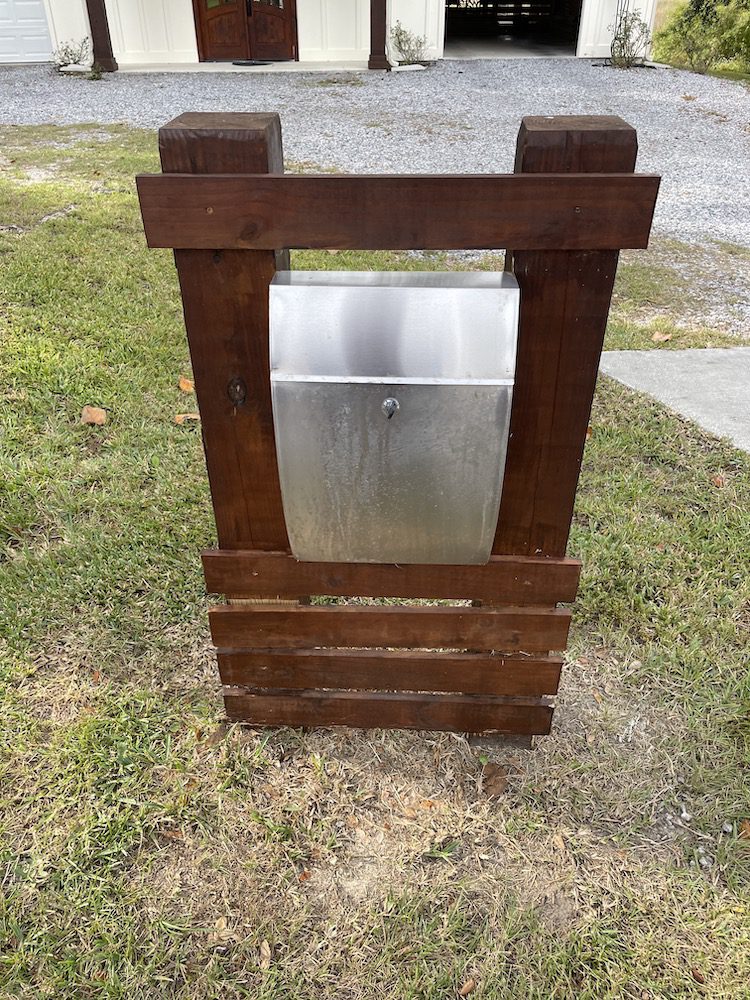

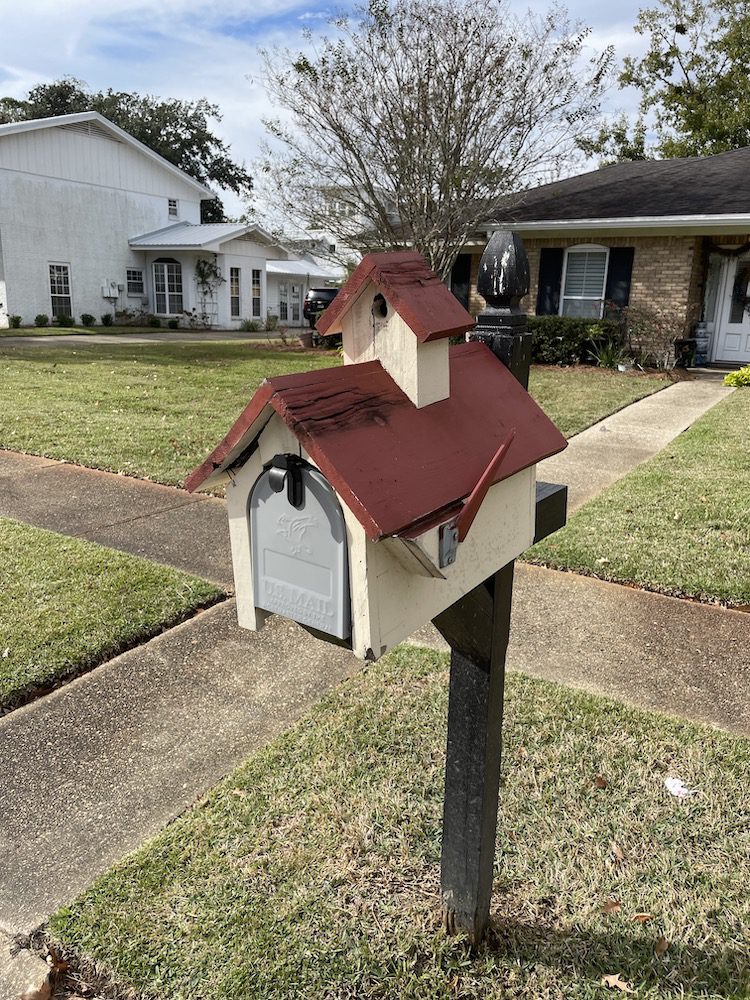


Mailboxes that match your hobbies or job
Some people like to make or buy from creators a mail box that reflects who they are. In the example below, a mail box shows a school bus, guess what the owner does for a living? There are many creative individuals who can craft one to meet your hobby or work requirements.
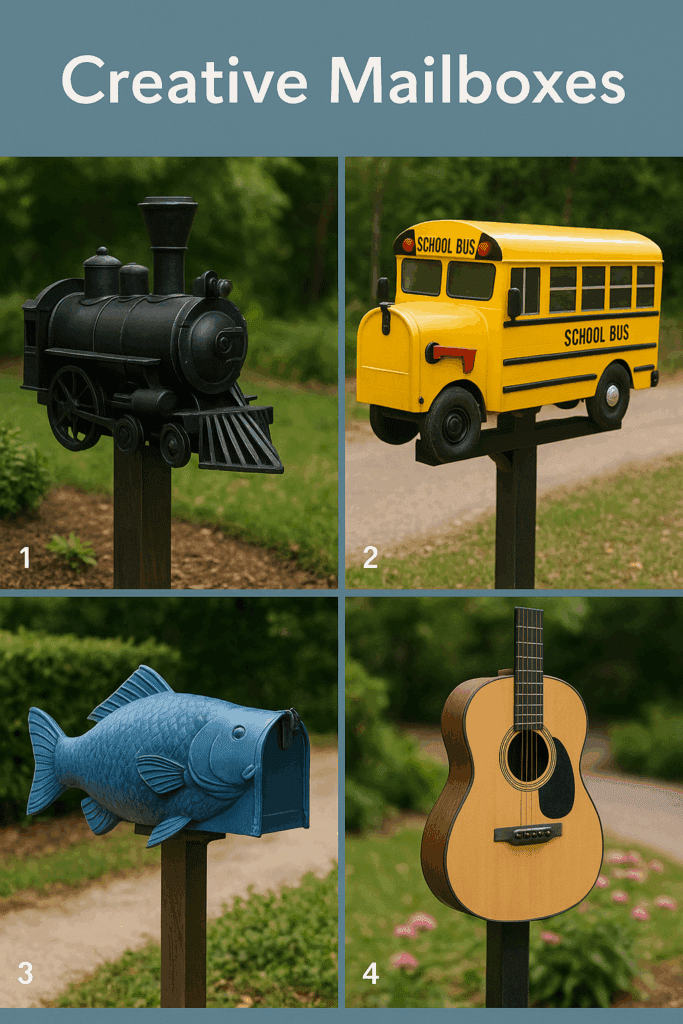
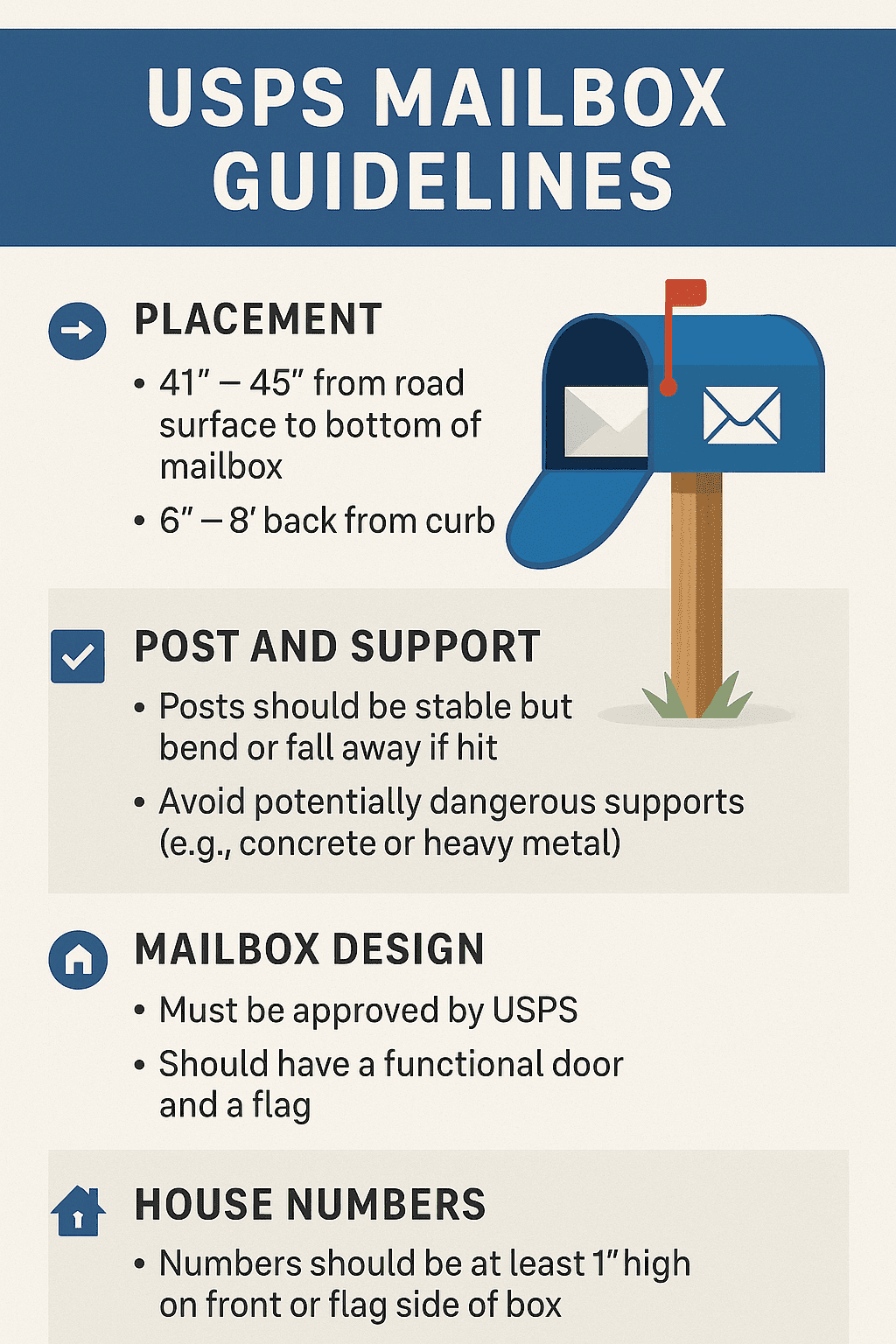
📬 USPS Residential Mailbox Rules
I made the mistake of placing my mail box in the wrong place, and the mail carrier would not deliver the mail. Who knew there were rules? I found out the hard way. Please read this section before you start on your journey to create a beautiful mailbox.
1. Mailbox Placement (Curbside)
- Height: The mailbox must be positioned so that the bottom of the mailbox is 41″ to 45″ from the road surface.
- Distance from the curb: Set the front of the mailbox 6″ to 8″ back from the curb (or edge of the road).
- Clear access: The mailbox must be easily accessible from the postal carrier’s vehicle—don’t block it with parked cars or landscaping.
2. Post and Support
- Use sturdy, stable posts made of materials like wood or metal.
- Avoid concrete or brick posts set directly in the ground unless approved—USPS recommends posts that will bend or break away if struck by a vehicle (e.g., a 4″ x 4″ wooden post or a 2″-diameter steel or aluminum pipe).
- Don’t use dangerous supports like heavy steel pipes, concrete posts, or masonry piers unless recessed safely.
3. Mailbox Design
- Must be USPS-approved (or custom-built to meet USPS specs).
- The box should be large enough to hold normal mail without it sticking out.
- If locking: Must include a slot large enough to accept packages and allow for outgoing mail (locking mailboxes must be USPS-approved).
- The door must open easily and close securely.
4. House or Unit Numbers
- Clearly display your house number on the mailbox in numbers at least 1 inch high.
- If your mailbox is grouped with others, label each box clearly with house/unit numbers.
5. Rural Mailboxes
- The same rules apply. In some areas, delivery may be to the door, a wall-mounted box, or a cluster unit, depending on local delivery policy.
6. Wall-Mounted Mailboxes
- It must be near your main entrance and easy for carriers to access without obstruction.
- No formal size requirement, but it should accommodate normal daily mail volume.
🛠️ Notes for Custom Mailboxes
If you’re creating a custom or artistic mailbox, be sure:
- The mail carrier can open it easily from the vehicle.
- It has a flag to signal outgoing mail (for curbside delivery).
- It doesn’t pose a safety hazard to people or vehicles.
- It’s not excessively large, sharp, or obstructive
📄 Official Resources:
- USPS Mailbox Guidelines (PDF)
- Local postmasters can provide additional direction or approval for unique designs.
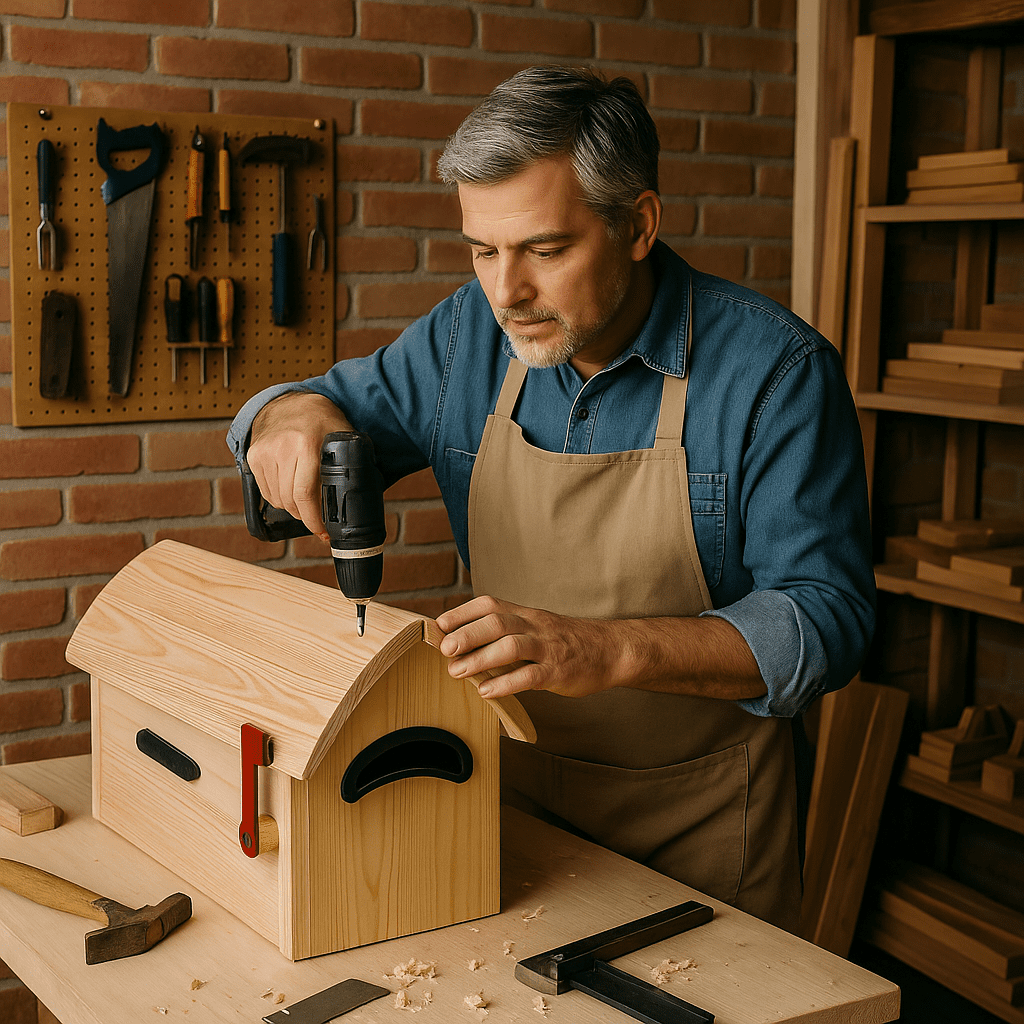
Business Opportunity: Turn Creative Mailboxes Into a Retirement Income Stream
Creative mailboxes are more than just curb appeal—they’re a growing niche with real business potential. In fact, this very article is among the most-read posts on RetireCoast.com, proving just how much interest there is in unique, handcrafted mailbox designs.
If you’re thinking about starting a small business after retirement, this could be your perfect entry point. Our Starting a Business After Retirement series offers step-by-step guidance for turning your skills into income.
If you have experience—or simply enjoy working—with wood, metal, or even molded plastic, making and selling custom mailboxes can be a rewarding venture. You can sell locally, at craft fairs, through social media, or online marketplaces like Etsy. There’s a steady demand for mailboxes that stand out, especially those designed to reflect local themes or personal hobbies.
A little creativity, some basic tools, and a plan could turn your hobby into a profitable post-retirement business.
Clearly, since you are interested in this article, you love to work around your home. Please read this article about trimming trees and hedges.
Read this article about why I decided to retire in Ocean Springs, Mississippi. One of many articles about retirement, personal finance, and the Mississippi Gulf Coast, which my wife and I decided to relocate to. Please sign up to receive notice of our new blog articles.
Please leave comments on this page. Sign up to receive notifications of other articles (to the right)
Mailboxes as Art – FAQ
Absolutely! Many homeowners create their own artistic mailboxes using wood, metal, brick, or repurposed materials. Just make sure it meets USPS regulations for height, size, and accessibility.
Yes, the USPS has specific guidelines regarding mailbox placement, size, and construction. Also, HOA communities may have design restrictions, so always check before building.
Durable materials like treated wood, powder-coated metal, brick, and stainless steel are ideal. These hold up well against weather and require less maintenance over time.
A unique mailbox adds personality and charm to your property. Whether rustic, coastal, or modern, it can become a standout feature and even increase perceived home value.
Yes! Integrated planters, solar lights, and decorative posts are popular ways to personalize mailboxes while still following postal guidelines.
Consider a lighthouse-style mailbox with a solar beacon, a bird-shaped post like a heron, or a mini replica of your home. Anything that reflects your style works!
Use weather-resistant paints, sealants, or powder coatings. Regularly inspect for rust, cracks, or fading—especially in coastal areas like the Mississippi Gulf Coast.
Not necessarily. You can create or purchase artistic mailboxes at a variety of price points, from affordable DIY builds to high-end designer pieces.
Yes—as long as your new mailbox follows USPS height, distance from the road, and accessibility rules, you’re free to upgrade it however you like.
It depends on your location. In areas like Ocean Springs and much of the Mississippi Gulf Coast, curbside and doorstep delivery is still common. But newer developments often use centralized mailbox clusters.
Discover more from RetireCoast.com
Subscribe to get the latest posts sent to your email.

